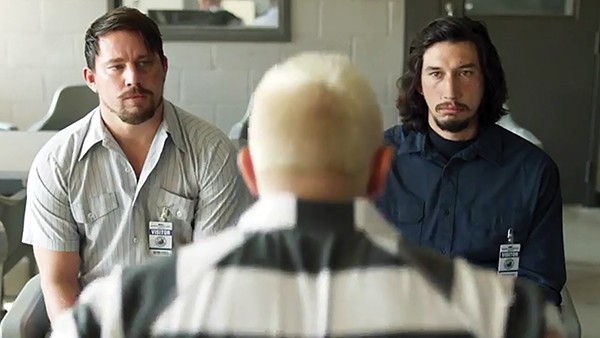Who is the greatest living American director? That’s the kind of question I usually avoid because it’s unanswerable and ultimately meaningless. Ranking is for sports. What’s important is not who is better than whom. It’s “does the movie work?” Does it make you feel like it intended to make you feel, and if so, is that a good feeling? If a film not only works in the moment, but transcends it and becomes something people want to watch again and again for years to come, that’s the kind of win a director wants to chalk up.
Nevertheless, as I was leaving Logan Lucky, the question of who is the greatest living American director was on my mind. There’s Steven Spielberg, who has an unparalleled breadth and depth of work over the last 43 years. Then there’s David Lynch, who is currently unspooling an 18 hour epic about the struggle for the soul of America with Twin Peaks: The Return.
And then there’s Steven Soderbergh. Along with Spike Lee, he was there at the creation of the modern indie movement, winning Sundance in 1989 with the sleeper hit sex, lies, and videotape. He made George Clooney a movie star with Out of Sight and defined the 21st century’s first crop of superstars with Ocean’s Eleven. Yet he can adapt Soviet sci-fi with Solaris, get his hands dirty in the DIY underground with Bubble, and take a deep dive into political biography with the two-part, four hour Che. Soderbergh is a filmmaker’s filmmaker, the one young directors look to to learn how it’s done. He works fast and lean and gets the job done with a minimum of fuss and bullshit.
It’s that commitment to craft that led him to quit Hollywood filmmaking in disgust in 2013. On his way out, he torched the current corporate regime with his State of the Cinema speech at the San Francisco International Film Festival. What was his idea of retirement? Single-handedly writing, shooting, and editing The Knick, a Cinemax TV series.
Everybody knew Soderbergh couldn’t stay out of the game, and he managed to come back on his own terms. At a time when the mainline studios are running up $200 million tabs to pay for a sinking Pirates of the Caribbean ship, Soderbergh’s new film comes into theaters already paid for using an innovative financing and sales scheme that cut out layers of corporate bloat. Logan Lucky isn’t going to win the weekend, but it doesn’t have to. And that means Soderbergh gets to work without an MBA looking over his shoulder. The results of this financial experiment speak for themselves: Logan Lucky is the best movie I’ve seen in 2017.

Channing Tatum (left) and Adam Driver star in Steven Soderbergh’s directorial return, Logan Lucky.
There I go ranking again.
Rebecca Blunt’s script is so tight you can bounce a quarter off of it. Channing Tatum and Adam Driver are Jimmy and Clyde Logan, two West Virginia brothers who’ve been down so long they don’t know what up looks like. Along with their sister Mellie (Riley Keough), they hatch a needlessly elaborate plan to rob the Charlotte Motor Speedway, just across the North Carolina border.
Every part of the sprawling cast is spot on. Katie Holmes swills chardonnay as Jimmy’s ex-wife who left him for a rich car dealer, greased to perfection by Seth McFarlane. Daniel Craig has way too much fun as a mad bomber named Joe Bang, who has to break out of, then back into prison, where Dwight Yoakam is the nicotine stained warden. Just when you think things are winding down, out pops Hilary Swank as an impossibly flinty FBI agent hot on the trail of the robbers-turned-folk-heroes.
It probably goes without saying that the photography and editing are beyond reproach, but I’m going to say it anyway. Logan Lucky is a ruthlessly designed and executed entertainment machine, but its obvious virtues may obscure its depth. Appalachia’s lack of affordable health care, the toxic at-will employment environment, the ravages of the for-profit prison industrial complex, and the impossible burdens of patriarchy on women young and old all serve to create plot points along the way to wacky larceny. With an instant classic comedy as subversive as it is hilarious, Soderbergh has served up a stunning rebuke to corporate Hollywood and cemented his status as one of the all-time greats.